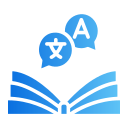Credentials and Learning That Truly Matter
Research region-specific credentials: ATA, CIOL, and specialized interpreting certifications. For teaching, consider CELTA or TEFL with practicum. Pick one credential aligned to your target niche, timeline, and budget, and tell us which exam you’re eyeing so we can share prep tips.
Credentials and Learning That Truly Matter
Learn a CAT tool like Trados or memoQ, a cloud platform like Smartling, and QA tools such as Xbench or Verifika. Add SEO, accessibility basics, or style guide development. Target projects that let you practice real constraints and deadlines, then document your workflow lessons.
Credentials and Learning That Truly Matter
Adopt four-week sprints: one core skill, one tool, one sample, one feedback loop. Track time-on-task, error patterns, and terminology consistency. Celebrate small wins, and share your sprint focus in the comments to find an accountability partner with similar goals.
Credentials and Learning That Truly Matter
Lorem ipsum dolor sit amet, consectetur adipiscing elit. Ut elit tellus, luctus nec ullamcorper mattis, pulvinar dapibus leo.








